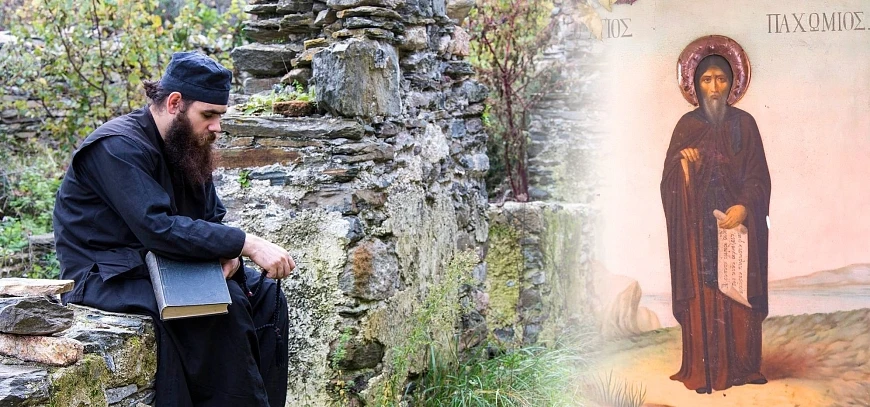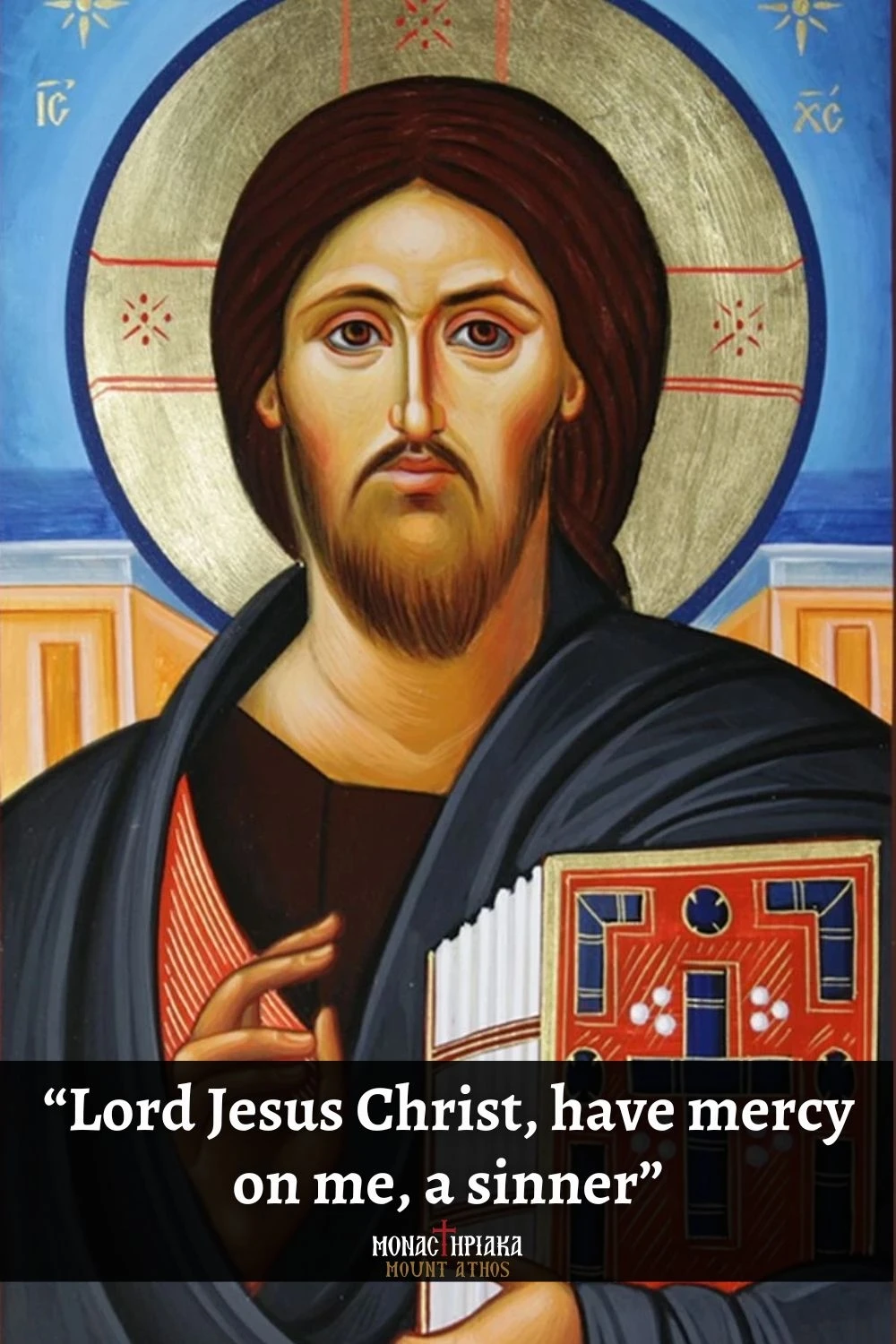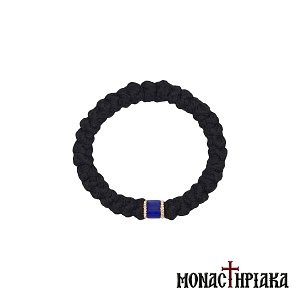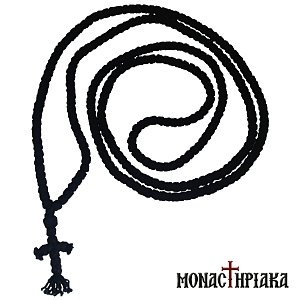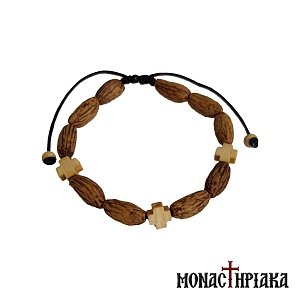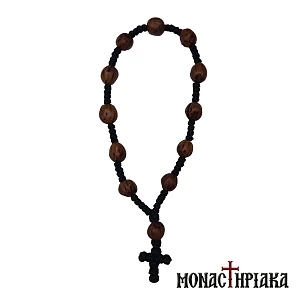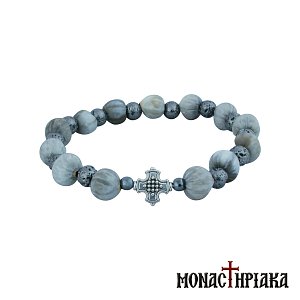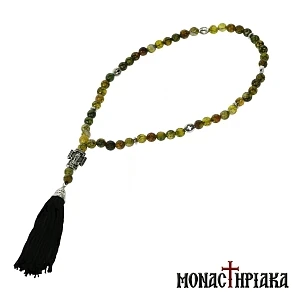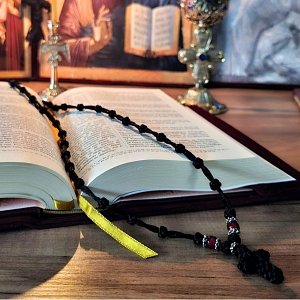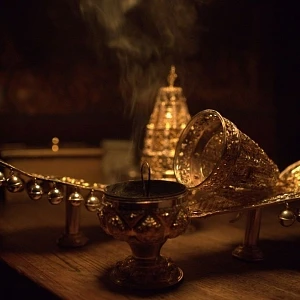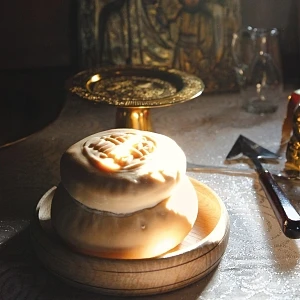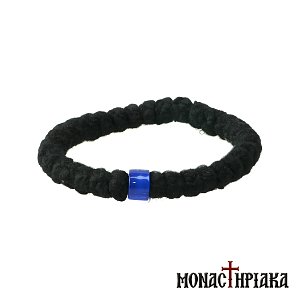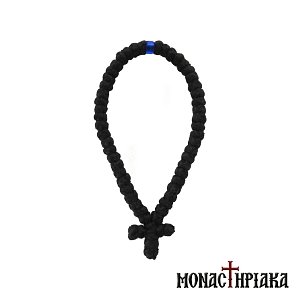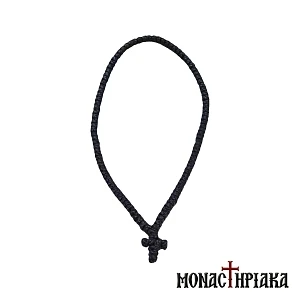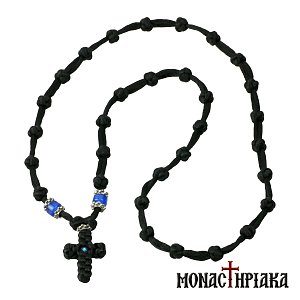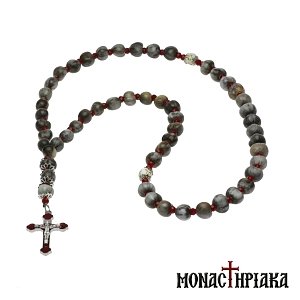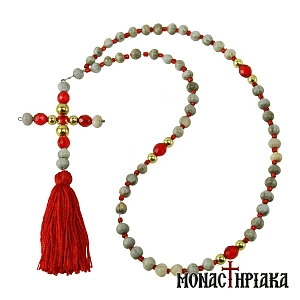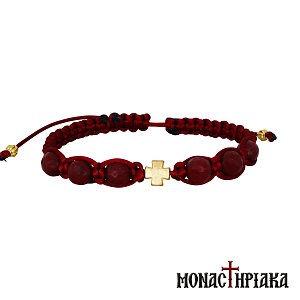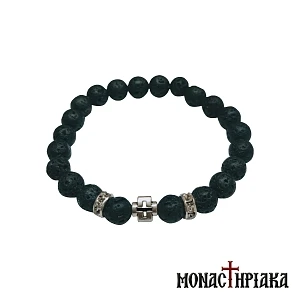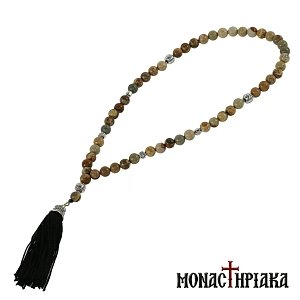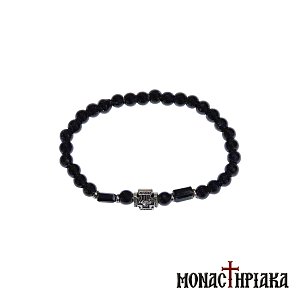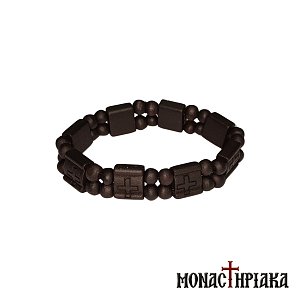How to use a prayer rope - Greek Orthodox Komboskini
During prayer, the faithful move through the knots, not for numerical counting, since the number of knots on each praer rope is fixed, but to maintain their focus.
There are generally two ways of praying with a prayer rope.
Free prayer, which can be done at any time and in solitude. Holding the prayer rope in either the left or right hand, one uses the thumb to pass over each knot while saying the prayer: “Lord Jesus Christ, have mercy on me” or “Most Holy Theotokos, save us.”
Structured prayer, as prescribed by our spiritual father. In this case, the prayer rope is held in the left hand, and following the guidance of the spiritual father, the faithful recites a specific prayer while counting the required number of knots with the thumb, according to their prescribed "canon".
Find here: Mount Athos Prayer Ropes
What prayers do you pray with a prayer rope
Each knot is typically accompanied by one of the following prayers. It can either be the Jesus Prayer or prayers to the Virgin MAry, the Saints and Archangels.
"Lord Jesus Christ, have mercy on the sinner, Most Holy Theotokos, save us, Saints of God, intercede for us."
or "Lord Jesus Christ, Son of God, through the intercessions of the Most Holy Theotokos and all the Saints, have mercy on me, the sinner."
Or the shorter version: "Lord Jesus Christ, have mercy on me, a sinner."
"Lord Jesus Christ, have mercy on me.”
With the aid of a prayer rope, one can also offer other short prayers, such as:
1. The Publican’s Prayer: "O God, be merciful to me, a sinner."
2. Prayer to the Most Holy Theotokos: "Most Holy Theotokos, save us."
3. Prayer to the Guardian Angel or Saints: "Holy Angel (or Saint [Name]), intercede for me."
If, instead of these invocations, one uses the phrases “have mercy on us” or “intercede for us,” or prays by naming specific individuals, then the prayer rope is used for intercessory prayers on behalf of others.
4. Prayer for the departed: "Grant rest, O Lord, to the soul of Your servant."
The history of the prayer rope - When and why was the first prayer rope made
The prayer rope is a cord used as a tool for prayer by monks, clergy, and laity of the Orthodox Church. It is particularly widespread in Eastern and Southeastern Europe, while similar tools that aid in prayer concentration can also be found in other religions with different names and forms.
When was the first prayer rope created and for what purpose? The use of prayer ropes dates back to the early Christian centuries. Before the use of prayer ropes, prayers were counted by moving small stones or seeds from one container to another.
One of the most well-known traditions attributes the creation of the prayer rope to St. Pachomius. St. Pachomius was seeking a practical way to help monks with their prayers.
It is said, therefore, that the Archangel Gabriel visited Saint Pachomius in his sleep and described to him the method of constructing a "tool", that is, the prayer rope that would meet the needs of prayer.
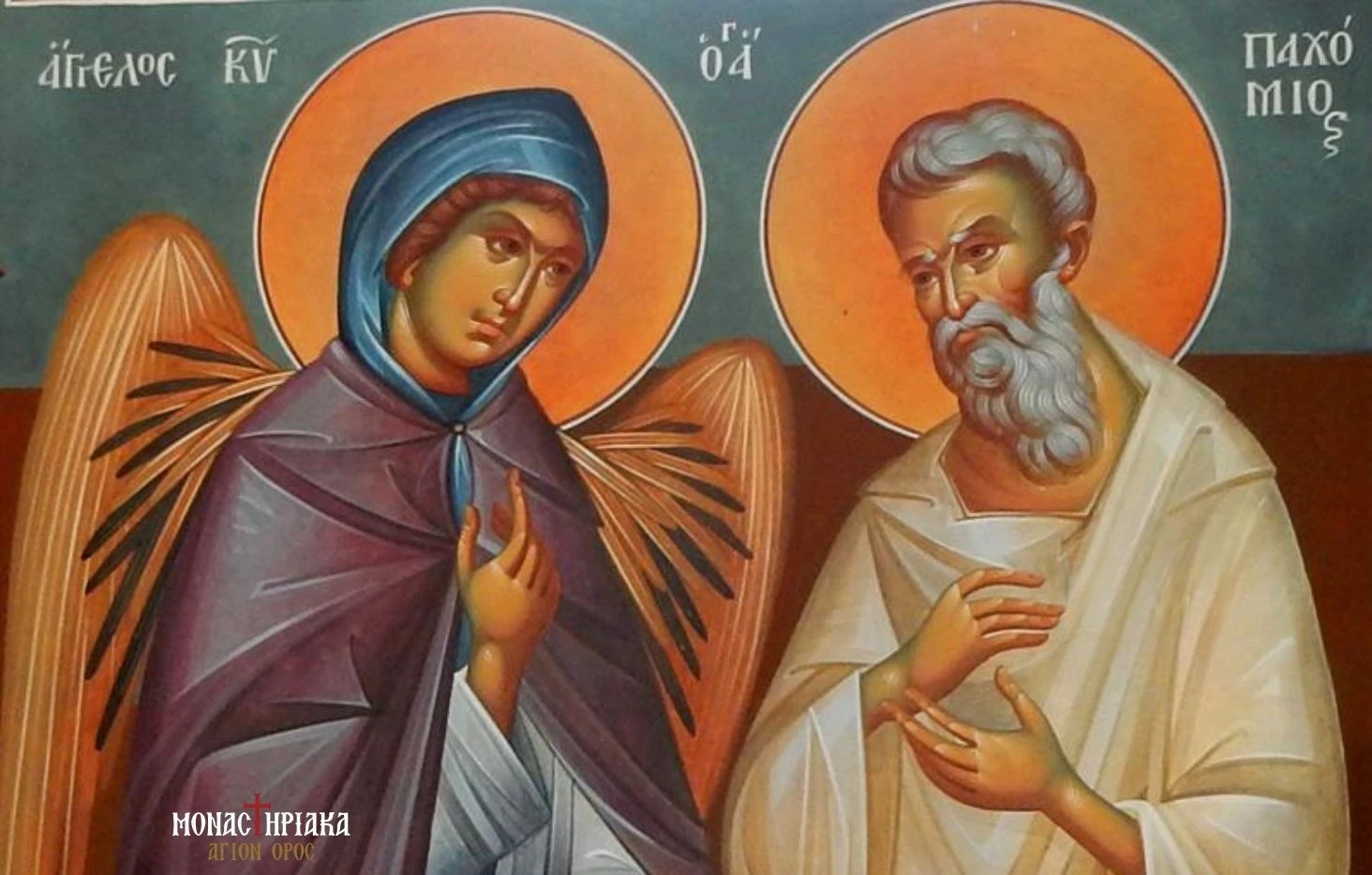
Another theory describes a monk who devised simple knots on a cord, but the devil repeatedly untied them. Then, an Angel of the Lord appeared and taught him a special knot, woven in the shape of crosses, to prevent its destruction.
Find here: Mount Athos Prayer Ropes
How a prayer rope is made
A prayer rope is handwoven by monks or skilled artisans. They choose a thin cord or thread made of various materials, as we will see in detail below, and create the knots.
With a special technique, the knots are distinct to the touch. During the weaving of a monastic prayer rope, the monk recites prayers for each knot individually. Upon completing the necessary number of knots, as determined by the monk, the two ends of the cord or thread are joined, forming a cross.
How many different prayer ropes exist
Types of Prayer Ropes
Orthodox prayer ropes are categorized based on the number of knots, the way they are worn and the material from which they are made.
Number of Knots
The most common and simplest prayer rope consists of 33 knots. However, there are also prayer ropes with 12, 50, 100, and 300 knots, referred to as 12-knot, 50-knot, 100-knot, and 300-knot prayer ropes, respectively.
Placement on the body that prayer rope is worn
The Greek Orthodox komboskini can either be worn on the finger, or around the wrist or around the neck. The prayer ropes, designed for the fingers, are small in size (12 knots) and are known as finger prayer ropes. Correspondingly, those meant to be worn on the wrist are called prayer ropes for the hand, while longer ones intended for the neck are known as neck prayer ropes.
Most prayer ropes feature a cross, either woven among the knots or placed at the end, marking the end of the rope. Additionally, some prayer ropes include separators every 10, 20, or 50 knots, either as beads or through a different thread color.
Material of construction
Traditional Orthodox prayer ropes are typically made from black wool. However, there are also prayer ropes made of silk thread.
Find here: Wool Prayer Ropes
Find here: Waxy and Silky Prayer Ropes
Additionally, some prayer ropes are crafted from beads of various kinds and colors, such as wooden beads or beads made from natural materials. Notable examples include the athonite prayer rope of the Twelve Apostles, made by the monks of Mount Athos using nutmeg seeds, as well as the athonite prayer rope with beads made from olive pits.
Another unique material used in making prayer ropes is the so-called "Tears of the Virgin Mary," which comes from the dried seeds of a shrubby plant known by the same name.
According to Christian tradition, this plant sprouted from the tears of the Theotokos that fell to the ground beneath the Cross of Jesus. It is said that this shrub, named "Tears of the Virgin Mary," miraculously appeared at the moment of her Son’s Crucifixion.
Find here: Prayer Ropes with Tears of the Virgin Mary
Finally, other types of prayer ropes can be found, made from leather and semi-precious stones.
Find here: Leather, Wooden and Stone Prayer Ropes
Find here: Prayer Ropes with Beads
In conclusion, the prayer rope is not a decorative accessory but a spiritual tool for ascetic practice and concentration in prayer.
"I urge Christians to make Crosses and Prayer Ropes, and I pray to our Christ to bless them so that they may have them as protective amulets." (Saint Cosmas the Aetolian)
Read also: "The symbolism of the Prayer Rope - Orthodox Komboskini"

